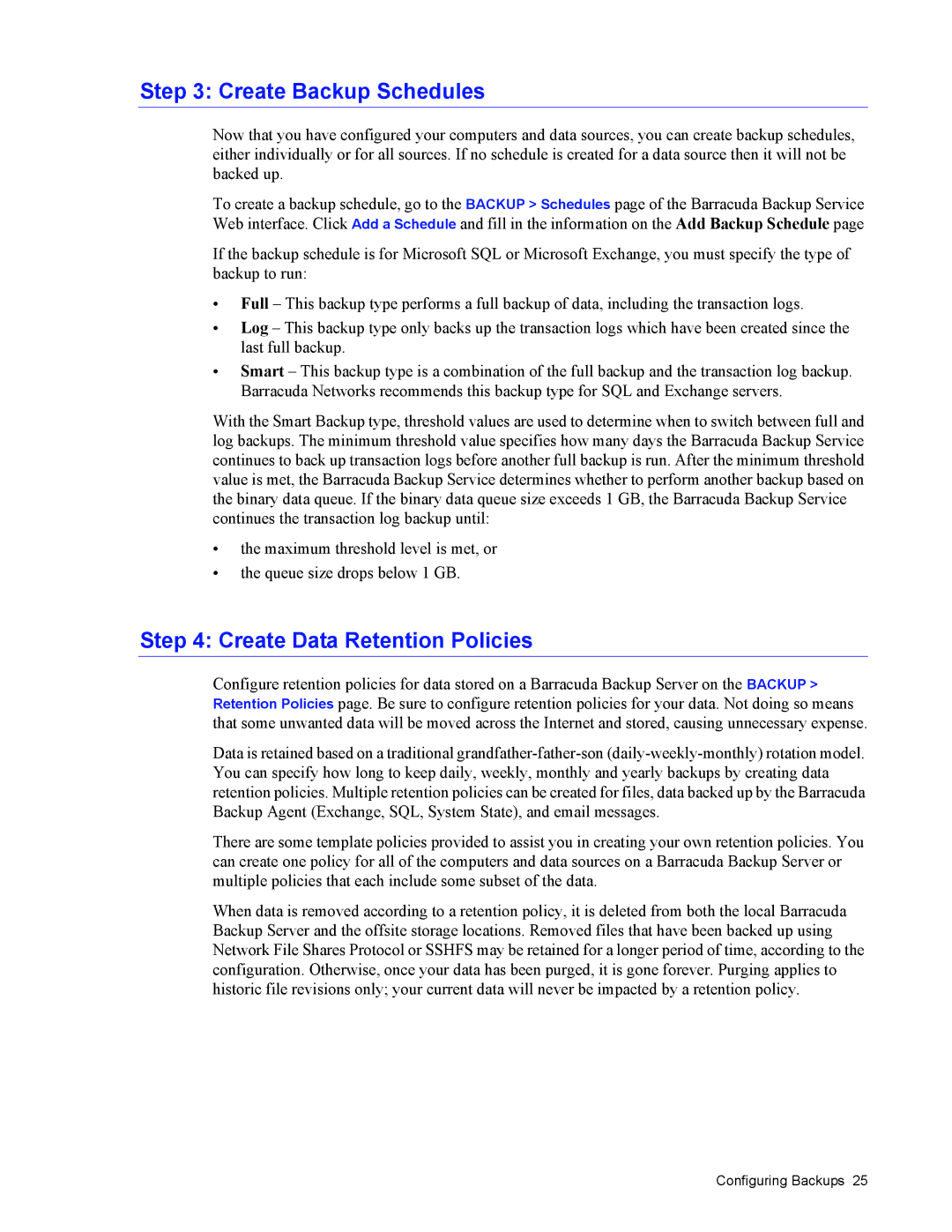
Step 3: Create Backup Schedules
Now that you have configured your computers and data sources, you can create backup schedules, either individually or for all sources. If no schedule is created for a data source then it will not be backed up.
To create a backup schedule, go to the BACKUP > Schedules page of the Barracuda Backup Service Web interface. Click Add a Schedule and fill in the information on the Add Backup Schedule page
If the backup schedule is for Microsoft SQL or Microsoft Exchange, you must specify the type of backup to run:
•Full – This backup type performs a full backup of data, including the transaction logs.
•Log – This backup type only backs up the transaction logs which have been created since the last full backup.
•Smart – This backup type is a combination of the full backup and the transaction log backup. Barracuda Networks recommends this backup type for SQL and Exchange servers.
With the Smart Backup type, threshold values are used to determine when to switch between full and log backups. The minimum threshold value specifies how many days the Barracuda Backup Service continues to back up transaction logs before another full backup is run. After the minimum threshold value is met, the Barracuda Backup Service determines whether to perform another backup based on the binary data queue. If the binary data queue size exceeds 1 GB, the Barracuda Backup Service continues the transaction log backup until:
•the maximum threshold level is met, or
•the queue size drops below 1 GB.
Step 4: Create Data Retention Policies
Configure retention policies for data stored on a Barracuda Backup Server on the BACKUP > Retention Policies page. Be sure to configure retention policies for your data. Not doing so means that some unwanted data will be moved across the Internet and stored, causing unnecessary expense.
Data is retained based on a traditional
There are some template policies provided to assist you in creating your own retention policies. You can create one policy for all of the computers and data sources on a Barracuda Backup Server or multiple policies that each include some subset of the data.
When data is removed according to a retention policy, it is deleted from both the local Barracuda Backup Server and the offsite storage locations. Removed files that have been backed up using Network File Shares Protocol or SSHFS may be retained for a longer period of time, according to the configuration. Otherwise, once your data has been purged, it is gone forever. Purging applies to historic file revisions only; your current data will never be impacted by a retention policy.
Configuring Backups 25
